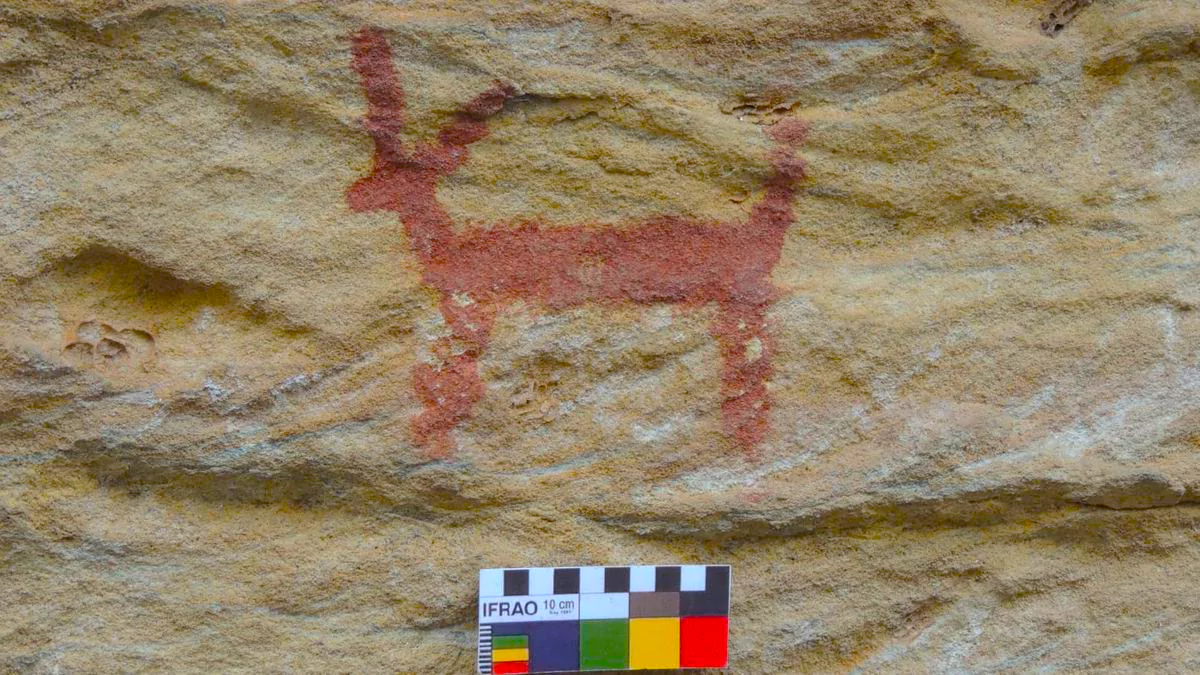Context
A team of archaeologists claimed to have discovered a unique Iron Age megalithic site at Ooragutta near Bandala village in SS Tadvai mandal of Mulugu district, Telangana.
- Site Discovery: The site was discovered by a team comprising K.P. Rao, history professor of the University of Hyderabad, and Ch Praveen Raju, research scholar from Yogi Vemana University, Andhra Pradesh.

Archaeological Sites Discovered in Telangana
- Dolmenoid Cists Shaped by Cap-Stones: The side slabs are arranged with slabs following the shape of the cap-stone. Hence, each ‘dolmenoid cist’ has a unique shape as dictated by the cap-stone.
- In Europe, such monuments are known as Passage Chambers.
- Unique Feature:
- This site has new types of monuments, which have not come to light so far anywhere in other regions of India.
- Usually in this region, a type of megalithic monument known as ‘Dolmenoid Cists’ is found.
- Most of the monuments in this region have squarish or rectangular shapes.
- Two New Rock Art Sites: The team also discovered two new rock art sites at Damaratogu in Gundala mandal of Bhadradri Kothagudem district.
- One of the sites, known as ‘Devarlabanda Mula’, has only depictions of animals and no humans.
- Since no weapons or domestic animals are shown, it is believed that the paintings may go back to the mesolithic age, anywhere between 8000 – 3000 BCE.
Enroll now for UPSC Online Course
Iron Age
- Chronology of the Iron Age in Peninsular India: In peninsular India, the Iron Age roughly covers the period from 1000 BC to 100 A.D.
- This is also a period for which textual evidence is available. Hence, scholars differ in their approach by working only with the archaeological evidence or incorporating the available textual evidence.
- Prominence of Megaliths: In peninsular India, the Iron Age primarily encompasses megalithic structures, often linked with habitation sites, within the region.
- Iron Age in North India: It is archaeologically represented by assemblages that mainly contain particular pottery types such as Painted Grey Ware (PGW) and Northern Black Polished Ware (NBPW).
About Megaliths
- About: In prehistoric art, a megalith is a large, often undressed stone that has been used in the construction of various types of Neolithic, Chalcolithic or Bronze Age monuments, during the period 4500-1000 BCE.
- Megalithic Monuments: The megalithic monuments of peninsular India, believed to have been erected in the Iron Age (1500 BC – 200 AD).
- Though megalithic sites are found all across India, they are concentrated mostly in peninsular India.
Also Read: Major Prominent Rock Paintings
![]() 20 Apr 2024
20 Apr 2024

